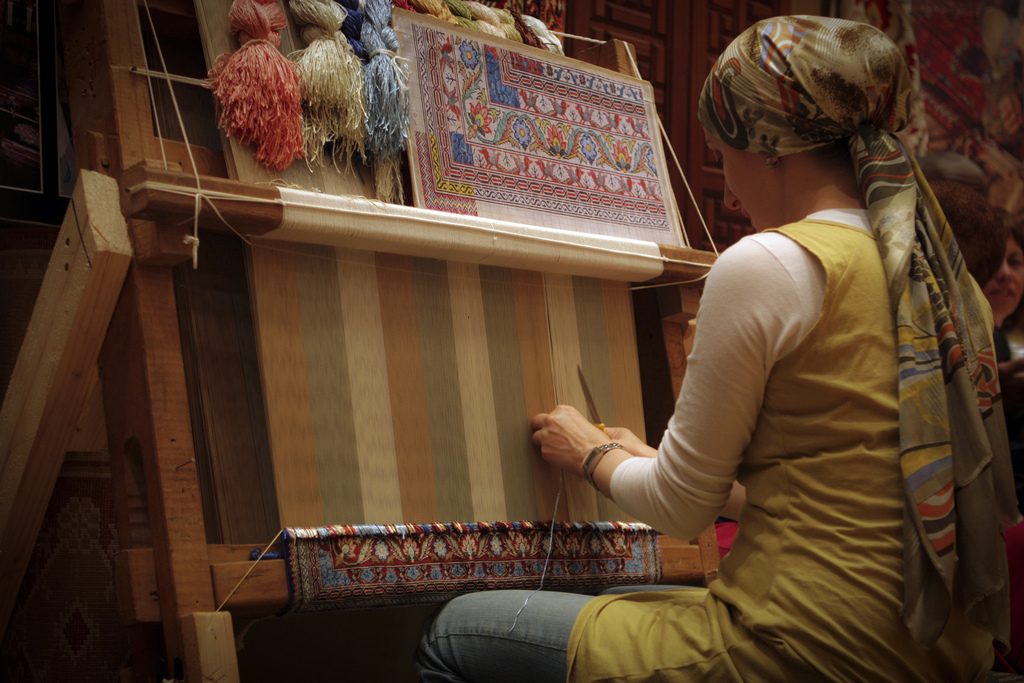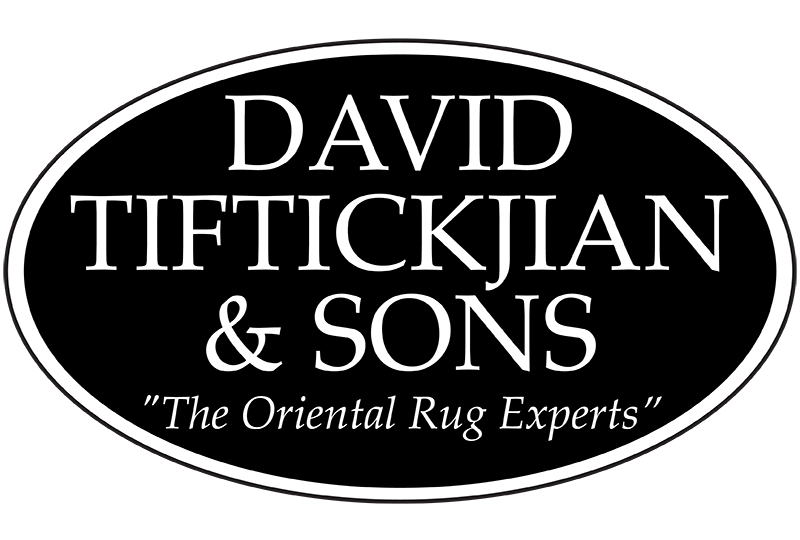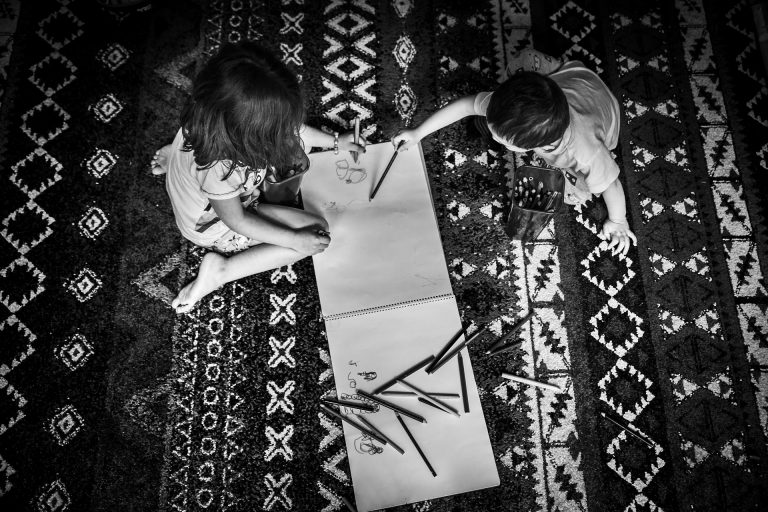
Oriental rugs are some of the most beautiful carpets available. However, one of the biggest questions to ask is, how are they made? Oriental rugs can take anywhere from a couple months to a few years to put together. However, the majority of rugs are made within a two to five month period. With years of craftsmanship and experience poured into every rug, generations of carpet-making knowledge goes into the final product.
Here are the crucial steps taken to make an oriental rug.
Step 1: Tools & Setup
Every oriental rug starts with the loom. The loom is a structure with two horizontal beams parallel to each other that are held up in front of the artisan. The distance between each beam depends on the width of the rug being made. The rugs foundation is made of the “warp,” or vertical strands of wool, cotton, or silk. The material used (wool, silk, or cotton) is coated in sea salts in order to help the dye stick and set.
Step 2: Dyeing
Dye is placed in separate containers based on color. When properly prepared, large amounts of the material is submerged in each container. Submerging allows the dye to stick and set into the material. It then must be checked every so often until the desired shade is achieved. Color checking is done by an expert as it takes years of practice and skill to know when the material is dyed to the correct amount. The longer the material is submerged, the deeper the color.
Step 3: Drying
After the correct shade is achieved, the material is hung out to dry. Artisans can not start weaving until the material is fully dry. It is usually hung out in the sun or placed in a special drying room.
Step 4: Coiling
Once the material is fully dried it can be coiled in preparation for weaving. Coiling takes a long time but eventually will make the weaving process easier. It is easier to pull the material onto a loom and manipulate if it has been pre-coiled.
Step 5: Designing
Artists draw out the rug’s design so the weavers can follow along while creating the rug. This design is known as the “cartoon.” The entire rug doesn’t have to be drawn out. It only needs to be drawn enough so the weavers understand the design and can continue it.
Step 6: Weaving
The colors for each design are loaded into the wool room. Every time the material enters or leaves the room, it is weighed to keep an accurate account of how much is available and whether more needs to be dyed and stored. The coiled material is then loaded onto the pre-set up loom. Starting at the bottom of the rug, weavers feed wool in between the warp and tie knots on each one to secure it. This creates the “weft.” A small knife is used to tie and cut the knots. As the rug is made, multiple artisans will have a hand in making it, so they work together to make sure the design comes out correctly.
Step 7: Washing, Blocking and Stretching
When weaving is finished, the rug is then washed, blocked and stretched. Washing helps to remove loose material while blocking and stretching helps to flatten the pile and remove wrinkles. After, the rug is dried and stretched in the sun.
Step 8: Finishing
If there are still wrinkles, they are now ironed out. Stray material is sheared off the pile and the ends of the rug are secured to keep the material in place. A final trimming process is used to make sure any loose strands are removed.
The Rug is Finished
An oriental rug is not only a decorative piece. It’s a work of art that brings with it a history of craftsmanship. Come find your oriental rug at David Tiftickjian & Sons! Our rugs add color and distinction to a room. They are easy to service and a lifelong possession.

